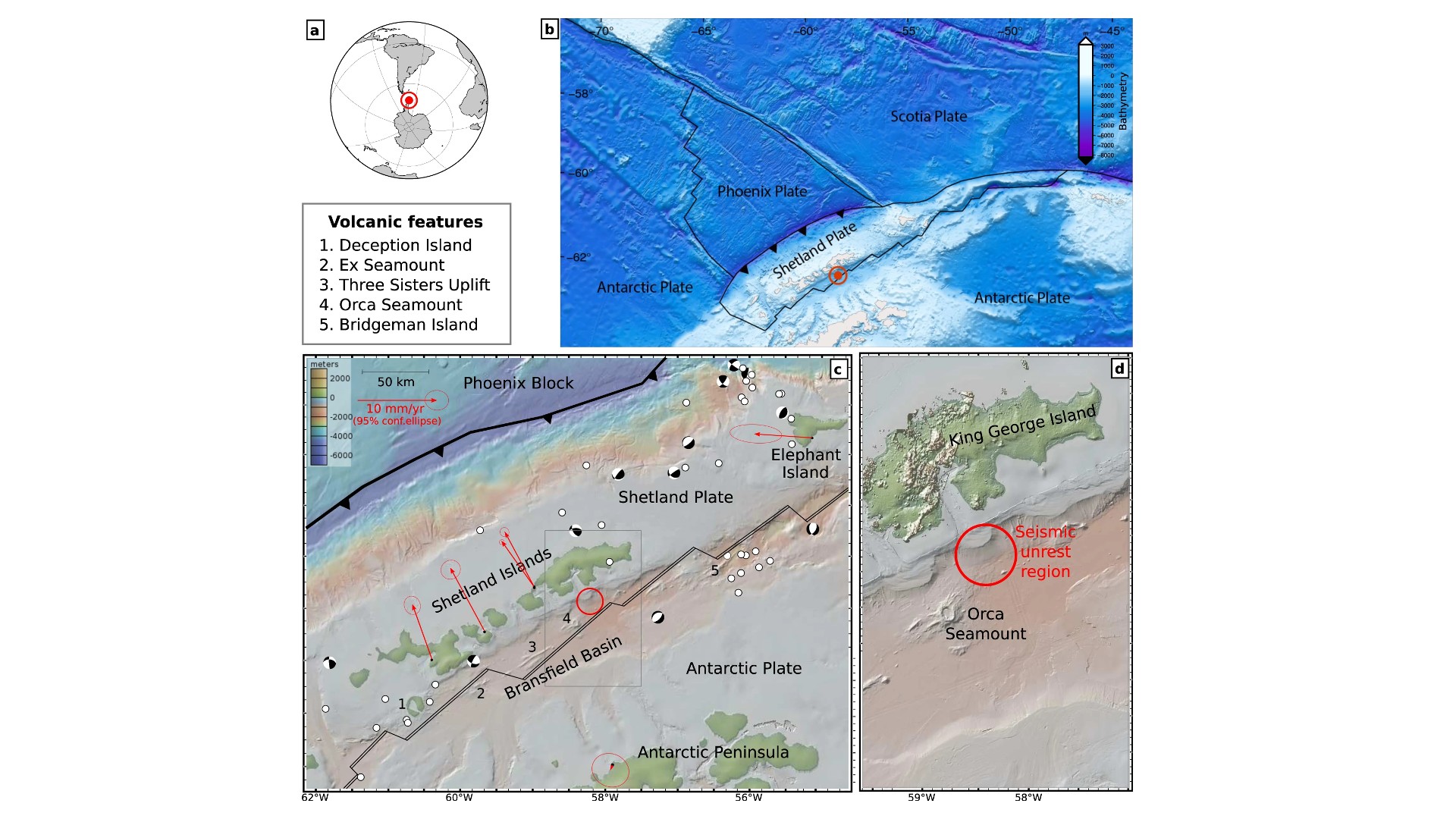
A long-dormant underwater volcano near Antarctica has woken up, triggering a swarm of 85,000 earthquakes.
The swarm, which began in August 2020 and subsided by November of that year, is the strongest earthquake activity ever recorded in the region. And the quakes were likely caused by a "finger" of hot magma poking into the crust, new research finds.
"There have been similar intrusions in other places on Earth, but this is the first time we have observed it there," study co-author Simone Cesca, a seismologist at the GFZ German Research Centre for Geosciences in Potsdam, told Space.com's sister site Live Science. "Normally, these processes occur over geologic time scales," as opposed to over the course of a human life span, Cesca said. "So in a way, we are lucky to see this."
The swarm occurred around the Orca Seamount, an inactive volcano that rises 2,950 feet (900 meters) from the seafloor in the Bransfield Strait, a narrow passage between the South Shetland Islands and the northwestern tip of Antarctica. In this region, the Phoenix tectonic plate is diving beneath the continental Antarctic plate, creating a network of fault zones, stretching some portions of the crust and opening rifts in other places, according to a 2018 study in the journal Polar Science.

Scientists at the research stations on King George Island, one of the South Shetland Islands, were the first to feel the rumblings of small quakes. Word soon got back to Cesca and his colleagues around the world, some of whom were collaborating on separate projects with the researchers on the island.
The team wanted to understand what was going on, but King George Island is remote, with just two seismic stations nearby, Cesca said. So the researchers used data from those seismic stations, as well as data from two ground stations for the global satellite navigation system, to measure ground displacement. They also looked at data from more far-flung seismic stations and from satellites circling Earth that use radar to measure shifting at ground level, the study authors reported April 11 in the journal Communications Earth & Environment.
The nearby stations are rather simple, but they were good for detecting the tiniest quakes. More distant stations, meanwhile, use more sophisticated equipment and can thus paint a more detailed picture of the larger quakes. By piecing these data together, the team was able to create a picture of the underlying geology that triggered this massive earthquake swarm, Cesca said.
Get the Space.com Newsletter
Breaking space news, the latest updates on rocket launches, skywatching events and more!
The two largest earthquakes in the series were a magnitude 5.9 quake in October 2020 and a magnitude 6.0 quake in November. After the November quake, seismic activity waned. The quakes seemed to move the ground on King George Island around 4.3 inches (11 centimeters), the study found. Only 4% of that displacement could be directly explained by the earthquake; the scientists suspect the movement of magma into the crust largely accounts for the dramatic shifting of the ground.
"What we think is that the magnitude 6 somehow created some fractures and reduced the pressure of the magma dike," Cesca said.
If there was an underwater eruption at the seamount, it likely happened at that time, Cesca added. But as of yet, there is no direct evidence for an eruption; to confirm that the massive shield volcano blew its top, scientists would have to send a mission to the strait to measure the bathymetry, or seafloor depth, and compare it to historical maps, he said.
Originally published on Live Science.
Join our Space Forums to keep talking space on the latest missions, night sky and more! And if you have a news tip, correction or comment, let us know at: community@space.com.

Tia is the assistant managing editor and was previously a senior writer for Live Science, a Space.com sister site. Her work has appeared in Scientific American, Wired.com and other outlets. She holds a master's degree in bioengineering from the University of Washington, a graduate certificate in science writing from UC Santa Cruz and a bachelor's degree in mechanical engineering from the University of Texas at Austin. Tia was part of a team at the Milwaukee Journal Sentinel that published the Empty Cradles series on preterm births, which won multiple awards, including the 2012 Casey Medal for Meritorious Journalism.










